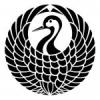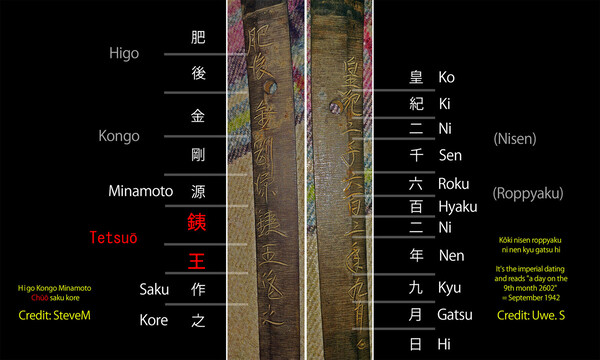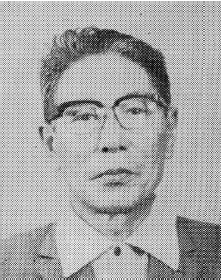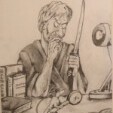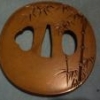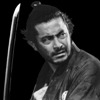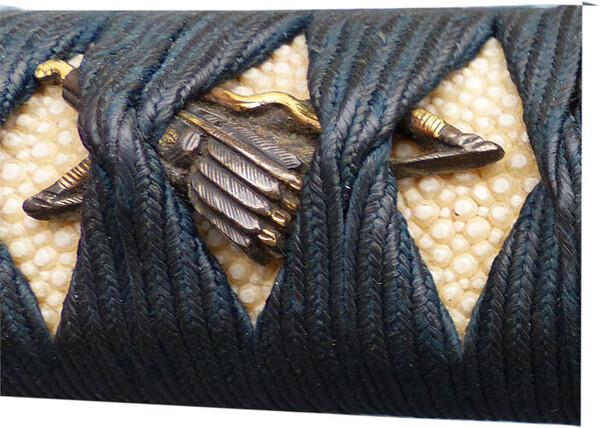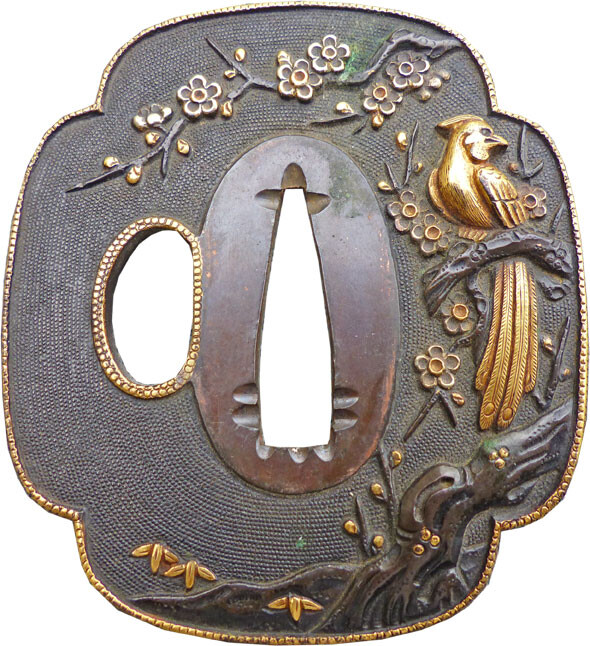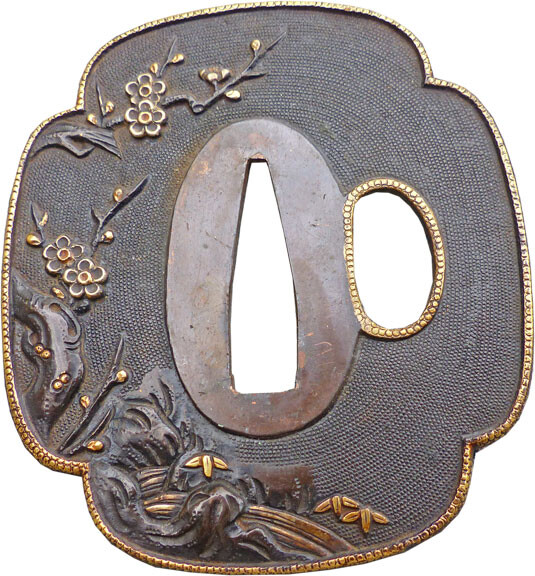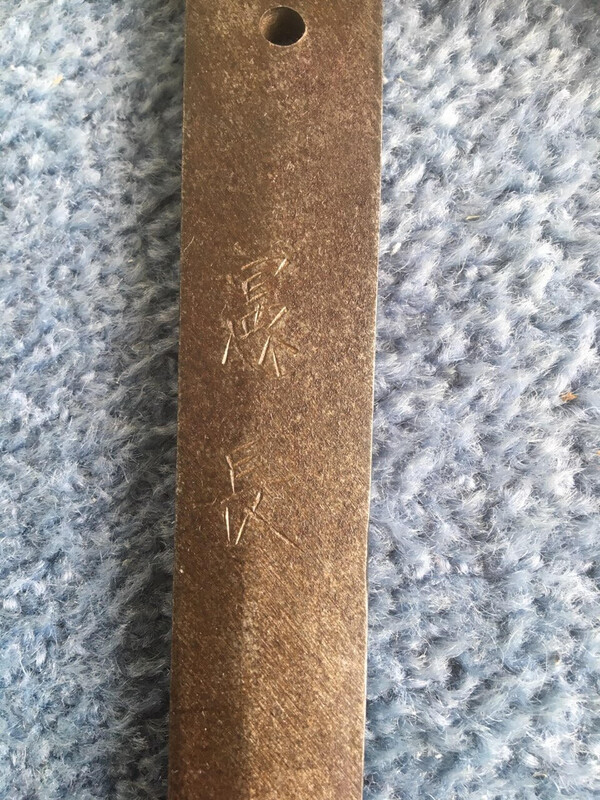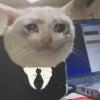Leaderboard
Popular Content
Showing content with the highest reputation on 11/18/2020 in all areas
-
9 points
-
Hello, from Markus book: YASUHIRO (靖博), Shōwa (昭和, 1926-1989), Kumamoto – “Minamoto Moritaka” (源盛高), “Kongōbyōe Moritaka Yasuhiro” (金剛兵衛盛高靖博), “Kōtei-bukotsu Mina-moto Moritaka” (皇敵無骨源盛高, about “against the unrefined enemies of the Emperor/Empire”), “Tetsuō” (鉄王), “Jingūji Ryōsai” (神宮寺良西), real name Moritaka Yoshio (盛高良夫), born October 30th 1908, he was a late smith smith from the lineage of Chikuzen Kongōbyōe Moritaka (盛高), he signed first with Akihiro (煕博) and changed his name in 1927 to Yasuhiro, 1933 he learned the art of jūmonji-yari (十文字鎗) forging from Enju Tarō Nobushige (延寿太郎宣繁), gō Tetsuō (鉄王), kihin no retsu (Akihide), First Seat at the 6th Shinsaku Nihontō Denrankai (新作日本刀展覧会, 1941)4 points
-
I have not skin-in-the-game on this auction or item. I'm just not able to bid, financially, and want guys to know this baby is up for auction in 2 days. https://www.proxibid.com/Firearms-Military-Artifacts/Military-Artifacts/Superb-Signed-WWII-Japanese-Officer-s-Sword/lotInformation/57745860#topoflot3 points
-
Hi All, Looking for some help with this Mei as I'm struggling to recognise most Kanji. I think the Omote starts with Higo as the first 2 Kanji (肥後?) to mark the province and the final 2 Kanji on the Omote are Saku Kore ( 作 之?) - , and the Ura ends with Month 月 ? Any help translating and identifying dates or swordsmith would be most appreciated. Thanks, Will3 points
-
3 points
-
Geoff, I am sorry to throw a negative in but to try and assess school period or anything else from a sword in this state of polish is not realistic. Also the chance of identifying utsuri on this blade is nil. It is hard enough to identify it on some blades in excellent polish. The only thing you can determine is the sugata and that might give you an idea of age but to try and identify anything else is guesswork and wishful thinking.3 points
-
3 points
-
3 points
-
The video showcase format is a great way of knowing what you're buying - far better than photos in my opinion. https://www.youtube.com/watch?v=eSARnI8V-1s&feature=emb_logo If I were you I wouldn't sell it at a loss. You should be patient and recoup what you have invested into it. This is a mighty fine koto sword and I see no reason why you shouldn't factor in the cost of the polish. That Ichimonji has to be one of the best koto sword I've seen offered on NMB, up there with Jean's sales. Hada and hamon, simply superb.3 points
-
2 points
-
First thought was Mino Den, but "could" be Sue Bizen maybe...2 points
-
The dragon menuki with the sword in its tail is a male dragon and the other is a female dragon and that makes the two of them a matched pair, as they should be.2 points
-
Today I bought some flat black lacquered wooden Japanese trays from Aizu, and I noticed in the blurb some tips for keeping urushi in good condition. I am aware that chipped lacquer on iron armour is a different problem, but I thought to post here what they say anyway. 1. Do not leave lying in hot water for long periods of time. Clean with warm/hot water, wiping quickly, and remove any excess moisture with a dry cloth. 2. Avoid using coarse or abrasive cleansing powders. 3. If you leave the object in direct sunlight you may expect some color fade or discoloration, or twisting/warping in the body of the utensil. 4. When not in use, before storing away, remove any moisture with a soft cotton cloth, then with a dry cloth remove any foggy/cloudiness or oily areas, then wrap them individually in soft paper and place them in a box away from moisture. 5. If the lacquer smell bothers you, expose them in a well-ventilated place for a week or so and the smell will naturally disappear.2 points
-
A friends film won best documentary “My documentary 'The Art of Imono' gets nominated for 3 top categories at the Shorties Film Festival: Update: Won Best Documentary! You can watch it here: http://vimeo.com/edwinlee/imono1 point
-
Hello all, Companion post to the gunto mounts I shared in the mil section. With many thanks to another member I was connected with a nice set of gunto mounts with an older blade. The focus was on the furniture and the details of the blade an added bonus to practice my own study skills on once it arrived. The blade was thought to be Shinto Mino-den, but I think it might be older based on the sori, feel, and nakago patina. Mr. Bowen on a FB group thought maybe late koto Bizen. I recently moved and my books are enroute... my photos aren't the greatest and as a novice having my own trouble trying to pick out some of the details in the metal in its wartime polish. I’m struck how narrow and slender this one feels in hand and don't mean that as a pejorative just descriptive. My other two blades are Shinto and a bit heftier. Nagasa: 62cm Sori: 2.5cm Hamon: ko-midare? I'm not sold on it and the pictures don't help. Working on assessing the hada and details in the steel Would be happy to hear any thoughts. I'll be (slowly) working through my own study and post any observations. It has some small chips and rust, not sure if its "financially" or physically up for a new full polish but looks nice with the mounts. Adds a nice bit of recent (and old) history to my collection. Cheers, Chris1 point
-
Here is a sword that I have had for decades. There is a dragon carved into the blade and I think it has a haiku or it was suggested a cutting legend engraved on the tang? Any help would be appreciated. There is also some verdigris on the tsuba. Can someone please suggest the best way of removing it without damaging the tsuba. Thank you, Dick1 point
-
@BANGBANGSAN it's an early Type 94 Tsuba, they are considerably thicker than normal. I believe the Koa Isshin swords have their own unique Koshirae makers early on, they have a unique Kabuotgane and Tsuka-Ito.1 point
-
216 with full numbers, mei, and date. There would be more, but many pictures found on the web don't show the serial numbers.1 point
-
1 point
-
1 point
-
1 point
-
Hi Chiba sensei basics Kazuo Chiba (also T.K. Chiba; February 5, 1940 – June 5, 2015) was a Japanese Aikido teacher and founder of Birankai International. He served for seven years as uchideshi at the Aikikai Hombu Dojo before being dispatched abroad to help develop Aikido internationally. He held an 8th dan in Aikido, issued by Aikikai world headquarters in Tokyo, Japan and was active in Aikido for over 50 years. Kazuo Chiba was born February 5, 1940 near Tokyo, Japan. At 14 years of age, he began serious Judo training at the International Judo Academy, and also began the study of Shotokan karate at age 16. In 1958, after coming across a photo of Morihei Ueshiba in a book, he decided to dedicate himself solely to Aikido and set out to apply as an uchideshi at the main school in Tokyo. Though not accepting live-in students at the time, after much persistence Chiba was admitted as an uchideshi at the Hombu dojo in Tokyo. Most of the daily training at the Hombu dojo was conducted by Kisshomaru Ueshiba, the son of the Aikido founder; O'Sensei was frequently away from the dojo giving lectures on Aikido and Oomoto-Kyo during Chiba's stay as uchideshi. For much of his seven-year period as a live-in student, however, Chiba Sensei traveled extensively with Morihei Ueshiba as his personal assistant during travels spreading Aikido. By 1960, Chiba had received the rank of 3rd dan and was assigned to Nagoya to establish one of the first branch schools of the Aikikai headquarters, where he served as its full-time instructor. In 1962, he also began teaching at the Hombu Dojo, and within three years had completed his training as uchideshi and earned promotion to 5th Dan. United Kingdom During the 1964 Olympic Games held in Tokyo, a notable Judo master, Kenshiro Abbe came to Hombu Dojo to pay respects to O'Sensei. It was during this visit that he requested an instructor be dispatched to England to develop Aikido for the British Judo council. Chiba Sensei, who had been serving tea to the two masters[6] had been supposed to go to New York to assist Yamada Sensei, but on the request O'Sensei sent him as the first representative of the Aikikai Foundation in the UK, though other teachers had gone in previously. In 1970 he was promoted to 6th Dan and awarded the title Shihan, Master Instructor. In 1975, Chiba returned to Japan to serve as Secretary of the International Department at the Aikikai Hombu Dojo. During the ten years Chiba spent in the UK, he also helped to promote Aikido across Europe particularly in Belgium, France, Greece, Ireland, Italy, the Netherlands, Morocco, Spain and Switzerland. In mid-October 1966 a demonstration sponsored by the local television station was held in the gymnasium of the secondary school where Chiba Sensei was conducting classes. Chiba Sensei used the student who had been leading the classes before his arrival as the uke, unfortunately he landed badly and hit his head hard enough to cause a severe concussion and was taken to hospital, successfully treated for intracranial bleeding, losing some sight in one of his eyes. He was around in my early Aikido years and I practiced with many Aikido Instructors over the UK. I'd seen him in demonstrations but to me he was too likely to loose control as a very 'martial' person hence the paragraph above and there are more examples available One of the early foremost teachers so I bought this kogai1 point
-
Relatively speaking, the tebako has the decorative look of an era far earlier than the tray.1 point
-
1 point
-
黎明富士 Reimei Fuji (Fuji at dawn) Artist is Morikawa Masa (that's the Masa in the picture, as you mentioned)1 point
-
As Klaus says 勝則 Katsunori (swordsmith) on the opposite side 昭和二十年二月 Showa nijū-nen nigatsu (Showa 20, February)1 point
-
1 point
-
Dave, I don't think the (cast) dragon MENUKI are mismatched, but my eyes are no longer that good, so I might miss details. The other pair are not SAKURA, but I am not sure what they are. Perhaps Clematis? Don't know. They don't make a MENUKI pair as they seem to be identical copies.1 point
-
1 point
-
Hello, ...real name Sawada Saburō (沢田三郎), born February 22nd 1908, he worked as guntō smith1 point
-
Minor correction - There wasn't a Seki Arsenal. The Nagoya Arsenal governed sword making in the area of Seki. The stamp is first seen in 1940 (1 in my survey), some in 1941, but the massive majority of them are seen in 1942, with many seen in the rest of the war years.. It's not known for sure if the stamp is of the Seki Sword Guild or an Army inspector stamp working the Seki area. But it's presence on a sword does mean the blade was made by non-traditional means.1 point
-
Hello Mil Swords Section, With many thanks to Neil (IJASWORDS) I am excited to share with the group my first gunto mount . I mainly own and have studied Shinto and earlier blades, but the mil historian in me wanted to have a gunto in the collection, and finding one with with an older blade helped meet both interests. Neil's recent slew of sale items and having recently moved to Thailand, being around some of the vestiges of the Pacific Theater, pushed me to get one for study. Neil was great to purchase from, connecting me with a perfect set for my interests and it arrived well packaged. I've read up on some of the history, but welcome any additional comments. A complete Type 98 set, nice fittings marked "54", with leather saya cover, and company grade tassel (my favorite grade since afterwards lies the misery of staff assignments...) Guess I'll need to spend more time on this sub-forum! And maybe make room for more Cheers, Chris1 point
-
" Sadly, if you look too closely at a beauty, you may see her flaws and the ravages of the years upon her." Many years ago, I shot a TV commercial for a Sunday Paper, the Star was certainly in a Dynasty of her own, and timeless. In the corridor, which led from her dressing room to the set, and before I could get my Spotmeter out of its case, she told me in no uncertain terms where she wanted the key light to be exactly. When she looked at the set, which I had pre lit, the day before, she found that the key light was exactly where she wanted it "You've been talking to Marlene Dietrich haven't you..." she said with a wink of a crystal green eye. I just smiled and the rest of the day was delightful. It's the same when appreciating an item like your tebako, just delightful. 😎1 point
-
Thanks Steve, that's really helpful. I thought that might be the first 2 Kanji for the smith but was not confident at all. I'll take photos of the blade and fittings to see if I can find any more info on it, would the military sword forum be best given the date of the blade? Updated Translation: Thanks, Will1 point
-
肥後金剛源鋳王作之 Higo Kongo Minamoto Chūō saku kore. Not sure about 鋳王. I can't find any similar signature on the internet. Could be the smith is claiming some lineage to Kongo Hyōei. Well-cut signature and date.1 point
-
The ranking of Yagyu has been beaten into my head over the years. The nami ones, even a half nami like this bell one, will command more- sometimes much more. Most of the Aoi ones are lower tier of the Yagyu designs out there. The only one that makes me pause is: https://www.aoijapan.com/tsuba-mumeiunsignedyagyu/1 point
-
It is heartening to find a sword where the painted assembly number on the nakago matches all the numbers on the fittings. Ohmura describes these swords as a "last stage type" and not a "normalized form". He explains how mixed fittings were used late in the war due to shortages. Some fittings are plain pressed metal, or from a parts bin of left overs. Even the ray skin "same" is replaced by a painted adhesive tape. This example is a 1944 NORINAGA. Due to years of wear and tear, the tzuka was re-wrapped in the original colour in Ohmura's Study. These swords are not as beautiful as the 98 or normalized RS, but are non the less interesting as a much needed WW2 sword for an officer at the front, added to this is their relative rarity.1 point
-
Bizen Kuninaga or it could be the top of Bizen no Kuni Osafune something, with the nakago cut just below Osa (also read Naga). Grey1 point
-
Hi Ryan, From top to bottom: Sukehisa Ju Ku in blue paint. the # 15 ? 1573 Yoshichika and the last 2 pix are Showa Ju Hachi Nen. Showa 18 or 1943 You need my Kanji Flashcards: https://www.japaneseswordbooksandtsuba.com/store/books/kanji-flashcards Cheers, Grey1 point
-
Will, your date (nengo) seems to be "皇紀二千六百二年九月日" (Kôki nisen roppyaku ni nen kyu gatsu hi). It's the imperial dating and reads "a day on the 9th month 2602" = September 1942 if I'm not totally off?! Mei not finished yet...1 point
-
1 point
-
1 point
-
1 point
-
Ubu-ba is typical for gendaito, and gendai often remain ubu-ba after their next post-war polish unless there is significant rust or damage that needs to be addressed.1 point
-
Brano, not convinced in getting Tanobe sensei sayagaki on this sword. Save the request for something else.1 point
-
1 point
-
1 point



